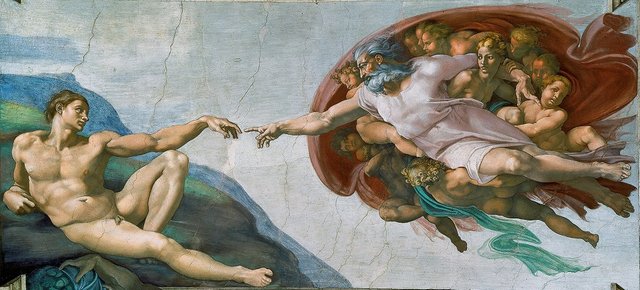Some thoughts about philosophy, ideology and religion /part 4/
Man has feelings of pleasure and pain. He divides his empirical experience from the outside world into one that favors his existence and survival as an individual and one that is harmful and dangerous to him. This elementary division, in its good part, is programmed into genotype - the instincts contain it in the genetic information. As the higher animals in their evolution instinctively feel in their struggle for existence, which is favorable for their survival, the person at the emotional level has their experience what is good and what is bad. This experience he speaks linguistically through opposing pairs of words such as "good - evil", "beautiful - ugly", "true - fake".
Ideological behavior, however, arises only when people or social groups and formations begin to accommodate the outside world and their social environment according to an unchanging bipolar scheme of interpretation of reality. Thus the social world is divided into two opposing poles, all relations are fixed as: "for me, for us, or against me, against us" - that is, they are compared as an enemy or companion "heretic or right". In such a world of life experiences there is no room for intermediate degrees, nuances, no neutrality, no tolerance. An essential element of ideological behavior is the fixed bipolar interpretation of the world. Such interpretations are based on expressions such as "kingdom of light" and "kingdom of darkness," "children of life" and "children of death," "antagonistic antagonistic classes, angels and devils, and so on. In this case, it is more than obvious that the original roots of such perceptions of reality lie in the mythological picture of the world. The other further structural feature of the ideological system can be defined as: a demonized stereotype of the enemy. It is in connection with the bipolar interpretation of the world, but its roots are probably in the psychodynamics of the human person.
The individual or group builds one image of the enemy on which all the negative qualities that can not be perceived by the respective community of people are projected. Similar images of the enemy for a public formation have the function of cement, ie they bind the social group or class. In doing so, one must distinguish between a real enemy and an imaginary enemy. The real enemy is being studied and well known by the relevant social services. The imagined enemy, however, is a creature of our own fear, on which our fear of life is projected, and our hatred. This image of the enemy is also demonized. This means that it is often related to a metaphysical reality. The real or the imaginary enemy turns into a "demonic enemy force" that threatens the given public formation and the whole world. In this way, fear and hate emotions are awakened to destroy this demonic enemy. But demons have their origins in mythological thinking. The image of the enemy is a generalized summary image. Enemies may have different names depending on the particular ideological context. These may be "Jews," "capitalists," "Russians," "Arabs," "Sonits," "Shaites," etc. In all cases, the enemy must be persecuted basically, be physically liquidated the relevant public formation to survive.

Religion has dogmas and dogmas are accepted by faith and one has faith.